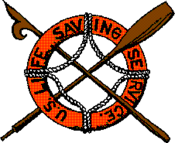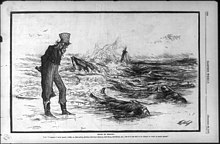
The United States Revenue Cutter Service was established by an act of Congress on 4 August 1790 as the Revenue-Marine upon the recommendation of Secretary of the Treasury Alexander Hamilton to serve as an armed customs enforcement service. As time passed, the service gradually gained missions either voluntarily or by legislation, including those of a military nature. It was generally referred to as the Revenue-Marine until 31 July 1894, when it was officially renamed the Revenue Cutter Service. The Revenue Cutter Service operated under the authority of the U.S. Department of the Treasury. On 28 January 1915, the service was merged by an act of Congress with the United States Life-Saving Service to form the United States Coast Guard.

The Gold Lifesaving Medal and Silver Lifesaving Medal are U.S. decorations issued by the United States Coast Guard. The awards were established by Act of Congress, 20 June 1874; later authorized by 14 U.S.C. § 500. These decorations are two of the oldest medals in the United States and were originally established at the Department of Treasury as Lifesaving Medals First and Second Class. The Department of the Treasury initially gave the award, but today the United States Coast Guard awards it through the Department of Homeland Security. They are not classified as military decorations, and may be awarded to any person.

The Houses of Refuge in Florida were a series of stations operated by the United States Life Saving Service along the coast of Florida to rescue and shelter ship-wrecked sailors. Five houses were constructed on the east coast in 1876, with five more added in 1885 and 1886. There were also two life-saving stations built, one just south of the Jupiter Inlet, the other on the Gulf coast on Santa Rosa Island near Pensacola, Florida. A house of refuge was planned for the Marquesas Keys, but was never put into commission. The houses were staffed by civilian contractors who lived in the houses with their families. Most of these houses remained in service as life-saving stations until 1915 or later. Some of the locations became United States Coast Guard stations after the Life-Saving Service was merged with the United States Revenue Cutter Service to form the Coast Guard in 1915.

The Virginia Beach Surf & Rescue Museum honors and preserves the history of Virginia's maritime heritage, coastal communities, the United States Lifesaving Service, and the United States Coast Guard along the Atlantic coast.
The history of the United States Coast Guard goes back to the United States Revenue Cutter Service, which was founded on 4 August 1790 as part of the Department of the Treasury. The Revenue Cutter Service and the United States Life-Saving Service were merged to become the Coast Guard per 14 U.S.C. § 1 which states: "The Coast Guard as established January 28, 1915, shall be a military service and a branch of the armed forces of the United States at all times." In 1939 the United States Lighthouse Service was merged into the Coast Guard. The Coast Guard itself was moved to the Department of Transportation in 1967, and on 1 March 2003 it became part of the Department of Homeland Security. However, under 14 U.S.C. § 3 as amended by section 211 of the Coast Guard and Maritime Transportation Act of 2006, upon the declaration of war and when Congress so directs in the declaration, or when the president directs, the Coast Guard operates as a service in the Department of the Navy.

Lifesaving is the act involving rescue, resuscitation and first aid. It often refers to water safety and aquatic rescue; however, it could include ice rescue, flood and river rescue, swimming pool rescue and other emergency medical services. Lifesaving also refers to sport where lifesavers compete based on skills, technique, speed and teamwork. Lifesaving activities specialized in oceanic environment is called surf lifesaving or coastal lifesaving.
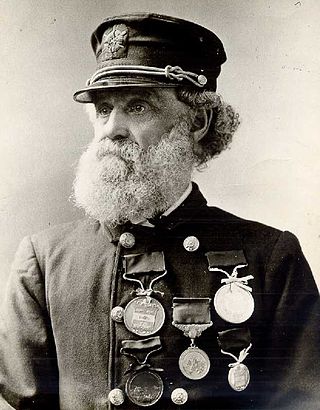
Joshua James was an American sea captain and a U.S. Life–Saving Station keeper. He was a famous and celebrated commander of civilian life-saving crews in the 19th century, credited with saving over 500 lives from the age of about 15 when he first associated himself with the Massachusetts Humane Society until his death at the age of 75 while on duty with the United States Life–Saving Service. During his lifetime he was honored with the highest medals of the Humane Society and the United States. His father, mother, brothers, wife, and son were also lifesavers in their own right.

USCGC Seneca, or before 1915 USRC Seneca, was a United States Coast Guard cutter built and commissioned as a "derelict destroyer" with the specific mission of locating and then destroying abandoned shipwrecks that were still afloat and were a menace to navigation. She was designed with excellent sea-keeping qualities, a long cruising range, good towing capabilities, and by necessity the capacity to store a large amount of munitions. She was one of five Coast Guard cutters serving with the U.S. Navy in European waters during World War I.
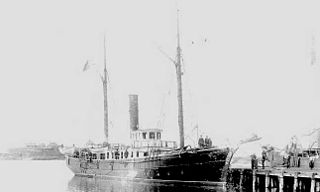
USRC Dexter was a Dexter-class cutter of the United States Revenue Cutter Service in commission from 1874 to 1908. She was the second ship of the Revenue Cutter Service to bear the name. The other Dexter-class cutters, all commissioned in 1874, were Dallas and Rush. Dexter was built by the Atlantic Works Company at Boston, Massachusetts. Captain John A. Henriques accepted her for service on 6 June 1874, and she was commissioned into the Revenue Cutter Service on 18 June 1874. Her role in the rescue of passengers from the sinking SS City of Columbus under winter gale winds brought her nationwide popular acclaim.
A rescue lifeboat is a boat rescue craft which is used to attend a vessel in distress, or its survivors, to rescue crew and passengers. It can be hand pulled, sail powered or powered by an engine. Lifeboats may be rigid, inflatable or rigid-inflatable combination-hulled vessels.
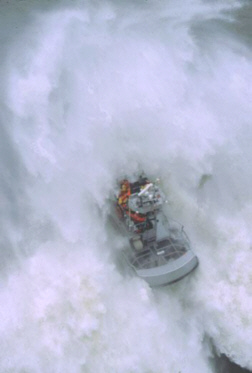
United States Coast Guard Station Cape Disappointment, situated near Cape Disappointment, Washington, at the mouth of the Columbia River, is the largest United States Coast Guard search and rescue station on the Northwest Coast, with 50 crewmembers assigned. Cape Disappointment Station is also the site of the oldest search and rescue station within the Thirteenth Coast Guard District. The station's Area of Responsibility reaches from Ocean Park on the Washington Coast south to Tillamook Head on the Oregon Coast.

United States Coast Guard Station Manomet Point was a United States Life-Saving Service station – and later a United States Coast Guard station – located on Manomet Point in Manomet, Massachusetts. The station was a sub-unit of Sector Southeast New England.

The Humane Society of the Commonwealth of Massachusetts, better known as the Massachusetts Humane Society was founded in 1786 by a group of Boston citizens who were concerned about the needless deaths resulting from shipwrecks and drownings and wanted to find ways to save lives. It was based on the Royal Humane Society, a similar organization established in Great Britain in 1774. The Massachusetts Humane Society became the model for the United States Life-Saving Service funded by Congress in 1848 and operated by the United States Coast Guard since 1915.

Isaac Franklin Mayo was a junior surfman in the United States Life-Saving Service, one of the agencies later amalgamated into the United States Coast Guard in 1915.

Joseph Napier, a station keeper for the United States Life-Saving Service founded the lifesaving station at St. Joseph, Michigan in 1876. He operated the station for many years and was credited with many dangerous and heroic rescues.

John Allen Midgett Jr. was a senior enlisted member of first the United States Life-Saving Service, and later the United States Coast Guard.
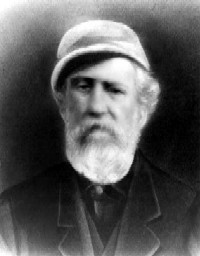
Benjamin Baxter Dailey (1844-1914) was the keeper of several lifeboat stations for the United States Life-Saving Service—one of the precursor services to the United States Coast Guard.

The Ephraim Williams was a sailing ship wrecked off the coast of Hatteras Island, North Carolina, during a late December storm, late in 1884. The rescue of the barkentine's crew by Benjamin B. Dailey and his six oarsmen of the United States Lifesaving Service was considered particularly heroic, and the rescue is celebrated to the present day.
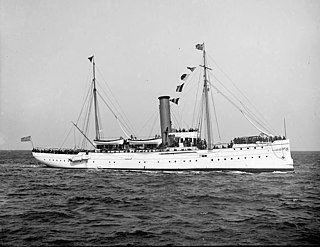
USRC Gresham was a cruising cutter and auxiliary gunboat built for the United States Revenue Cutter Service to patrol the Great Lakes. She was one of a series of cutters named for former U.S. Secretaries of the Treasury. Her namesake Walter Q. Gresham served as the 35th Secretary of the Treasury in 1884 and died in 1895 while serving as the 33rd U.S. Secretary of State. She became part of the newly created United States Coast Guard in 1915, and also served as a coastal convoy escort and patrol boat under United States Navy control during both World War I and World War II. After being decommissioned by the Coast Guard in 1944, she eventually came under Israeli control in 1947. She carried Jewish refugees from Italy to Palestine and later served in the fledgling Israeli Navy until 1951.

This is a list of United States Coast Guard historical and heritage sites that are open to the public. This list includes National Historic Landmarks (NHL), the National Register of Historic Places (NRHP), cutters, museums, monuments, memorials and more. It includes only NHL Lighthouses. There are many more resources dedicated to lighthouses, this list attempts to collect everything else in one list. The United States Lighthouse Society, Lighthouse Friends and the many Wikipedia pages dedicated lighthouses are a few of the many excellent resources for those interested in lighthouses. This list captures the most important historical features, that is the NHL and the often overlooked U.S. Coast Guard sites.
